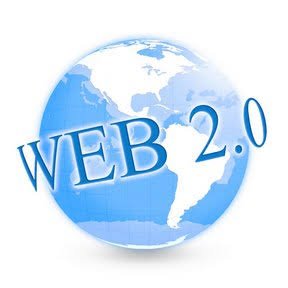Learn with steem contest ~Understanding Web 1.0 to 3.0|| part 2- Web 2.0
Hello friends,
It’s another week of our iteach contest organized by @fredquantum in this community. This week is a continuation of where we stopped last week. Last week my focus was on web1.0, this week I will be talking about Web 2.0. Read and enjoy.

source
INTRODUCTION
Web 2.0, the next iteration of the World Wide Web, places an emphasis on users' ability to collaborate and communicate online. Web 2.0 encompasses web-based tools such as wikis and social networking sites that facilitate communication and sharing of information in virtual communities. Web 2.0 is distinguished by its ability to facilitate user-to-user contact and cooperation in virtual spaces. Some examples of Web 2.0 technologies include wikis like Wikipedia, social networking sites like Facebook and Twitter, and collaborative tools like Google Docs.
In 2004, the phrase "Web 2.0" was coined to describe the improved version of the World Wide Web that was soon to come. There was a suggestion of a shift from static HTML sites to user-generated content and dynamic, interactive web applications. Web 2.0 was distinguished by the proliferation of social media, the ease of online collaboration, and the availability of user-created content.
In what ways did web 2.0 differ from earlier versions?
Web 2.0 attempt to make the World Wide Web more user-friendly and interactive. The primary features of Web 2.0 are:
Blog posts, videos, and social network updates are all examples of user-generated content, which is easy to create and share thanks to Web 2.0.
Users are able to easily connect with one another and collaborate on projects because to the social networking and collaboration tools made possible by Web 2.0 technologies such as social media, forums, and wikis.
Using tools like Ajax and Flash, Web 2.0 makes it possible to create rich Internet applications with more interactivity and functionality.
Web 2.0 is built to be accessed from mobile devices, with features like responsive design and other technologies that ensure a consistent user experience regardless of the platform.
Web 2.0 is built on cloud computing, which means that users may access their data and applications from any internet-connected device, anywhere in the world, without having to download and install any special client software.
Web 2.0 is based on user-generated content, collaborative efforts, and highly interactive features. It has been crucial in the evolution of social media and other online platforms, and it has helped increase the web's accessibility and involvement.
Useful Web 2.0 Platform Examples
Some examples of Web 2.0 platforms include social media sites (such as Facebook, Twitter, and Instagram), productivity and collaboration programs (such as Google Drive, Trello, and Slack), and content-sharing websites (such as YouTube, Reddit, and Wikipedia). Web 2.0 platforms are well-known for facilitating user-to-user communication and collaboration through features like user-generated content and social networking.
Is Web 2.0 doomed to fail?
It would be wrong to say that Web 2.0 was a total bust. Even though the term "Web 2.0" is no longer commonly used to describe the state of the World Wide Web as it now exists, the technology and guiding concepts of "Web 2.0" have had a significant impact on how we use the internet today. More individuals are creating material online, social media are growing, and people can work together and communicate in new and efficient ways thanks to Web 2.0 tools. There are positive and negative outcomes to these advancements, therefore labeling them a "failure" is subjective.
Some of the challenges and issues associated with the technology and ideas that Web 2.0 represents include the spread of false information, the impact of social media on mental health, and the likelihood of abuse and harassment online. The consolidation of the web into the hands of a few large technology companies has also raised concerns about privacy and the monopolization of power.
How Web 2.0 Can Help You Make Money
Companies used a wide variety of methods during the Web 2.0 period to monetize their online communities, products, and services. Web 2.0 businesses often made money through a combination of advertising revenue, user fees for access to premium features, and data mining to better target advertisements. The rise of social media and UGC has also opened up new ways for companies to monetize their platforms through advertising, brand partnerships, and sponsored posts/influencer marketing.
Summary
The "Web 2.0" version of the World Wide Web is designed to improve communication and cooperation between people all over the world. Sites like Facebook, Twitter, and LinkedIn fall under this category, as do weblogs, wikis, and other forms of online collaborative writing. One of the most important aspects of Web 2.0 is the ease with which information can be shared and accessed from any internet-connected device, as well as the prominence of user-generated content, user interaction, and collaboration. The proliferation of Web 2.0 tools and platforms has greatly influenced online information sharing and communication.
I will like to invite @josepha @bela90 @udyliciouz to participate in this contest.
Guess what? I will leave this contests to the experts like you.
You get my vote!
I will learn from reading your posts. (•ิ‿•ิ)
Hahaha …. Thanks m’am